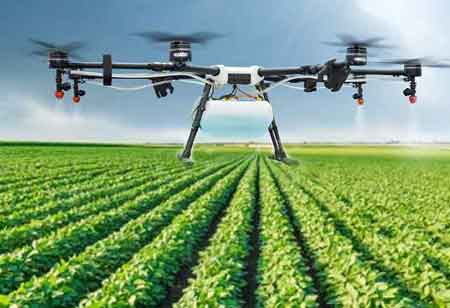Thank you for Subscribing to Agri Business Review Weekly Brief
Evolution In Agriculture Sector By Iot-Enabled Smart Farming
Only IoT-enabled smart farming is not imparting to the modernization of conventional farming methods, but it also promotes alternative agriculture methods such as organic farming

By
Agri Business Review | Wednesday, February 02, 2022
Stay ahead of the industry with exclusive feature stories on the top companies, expert insights and the latest news delivered straight to your inbox. Subscribe today.
Smart farming is now possible because of IoT(Internet of Things).
FREMONT, CA: Only IoT-enabled smart farming is not imparting to the modernization of conventional farming methods, but it also promotes alternative agriculture methods such as organic farming, family farming (complex or small spaces, unique cattle or cultures, preservation of rare or high-quality varieties, and so on), and highly transparent farming.
IoT-enabled smart farming also improves the environment. For example, it can aid farmers in increasing their water efficiency and optimizing inputs and treatments.
The critical applications of IoT-enabled smart farming altering the agriculture sector are listed below.
Precision Farming: Precision farming means anything that makes farming more accurate and controlled, especially in animal husbandry and agricultural production.
This farming way leans heavily on information technology, sensors, robotics, control systems, automated vehicles, hardware, and variable rate technology.
Precision farming utilizes high-speed internet, mobile devices, and low-cost satellites (for images and positioning).
Agricultural Drones: Drones for agriculture technology have grown tremendously and quickly. Drones used in agriculture are a great instance of this trend. Drones are being used to develop a range of agricultural operations.
Both ground-based and aerial, Drones are utilized in agriculture to assess crop health, apply pesticides, plant, irrigate, monitor crops, and conduct field analysis. These drones collect multispectral, thermal, and visual imagery while in flight.
Numerous benefits of drones involve integrated GIS mapping, crop health imaging, ease of use, time savings, and enhanced agricultural output. We can convert agriculture into a high-tech sector by connecting drone technology with solid strategy and planning regarding real-time data collection.
Including plant health indices, agricultural drone data can expect crop yields, stockpile size, nitrogen content, canopy cover, scouting reports, and map weed pressure.
Livestock Monitoring: Large farm owners employ wireless IoT applications to track their cattle's location, health, and well-being. This information helps them detect sick animals and, in the future, isolate them from the herd, care for them, and also aid in disease management among other animals. Additionally, it assists owners in reducing labor costs by enabling them to find their cattle via IoT-based sensors.





